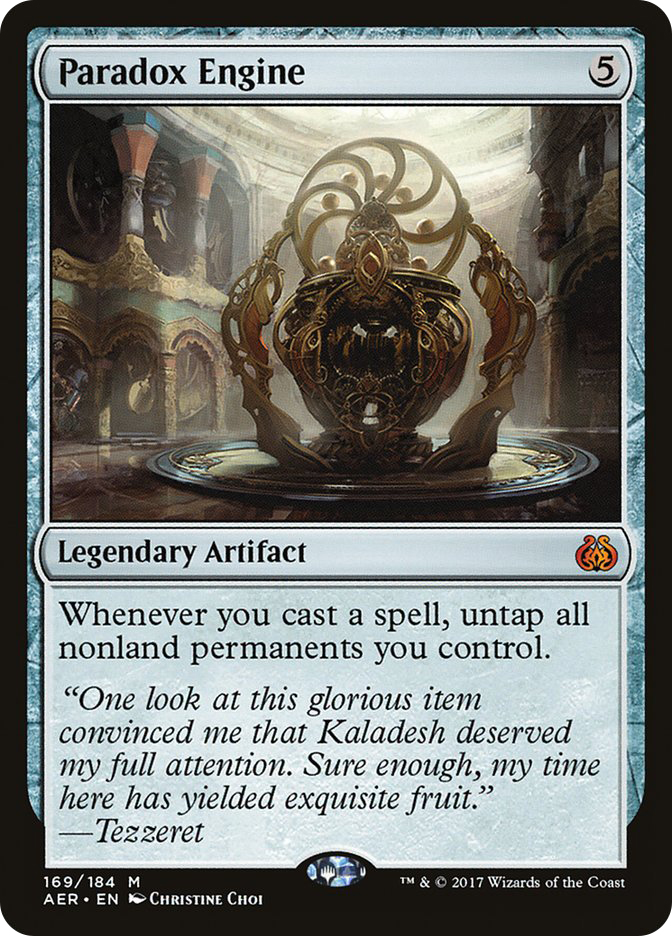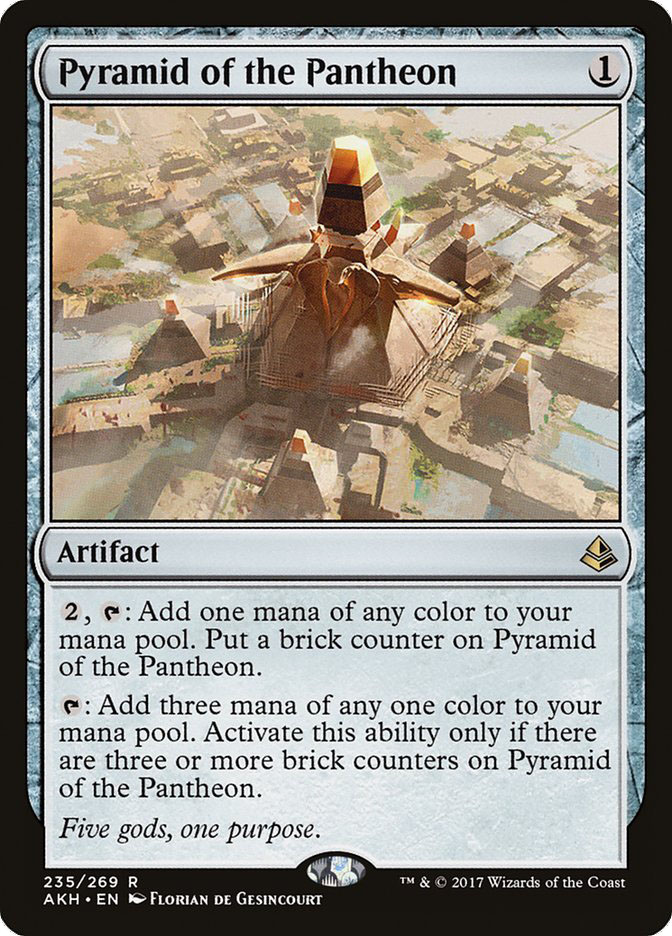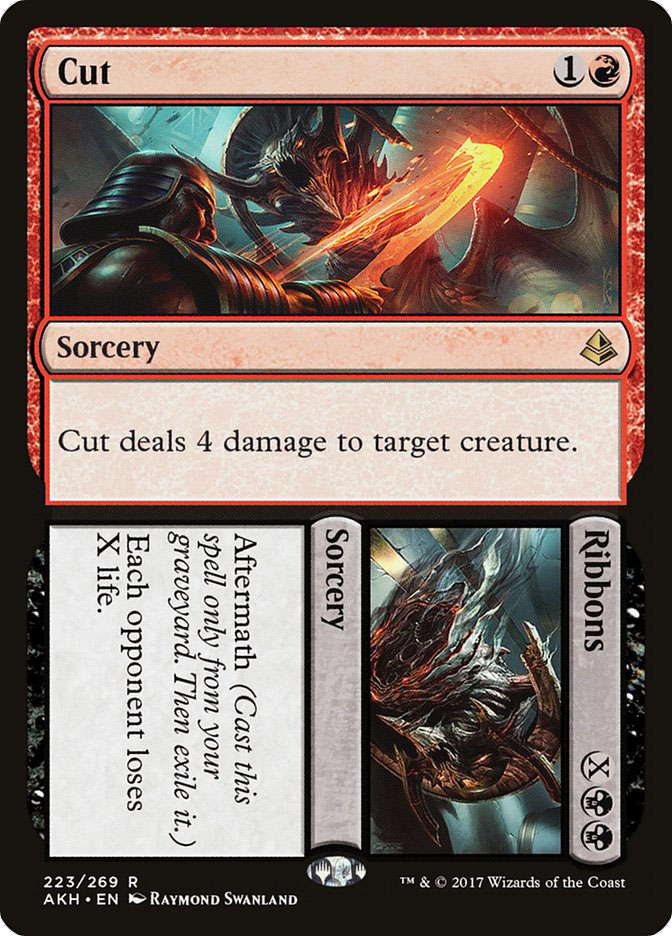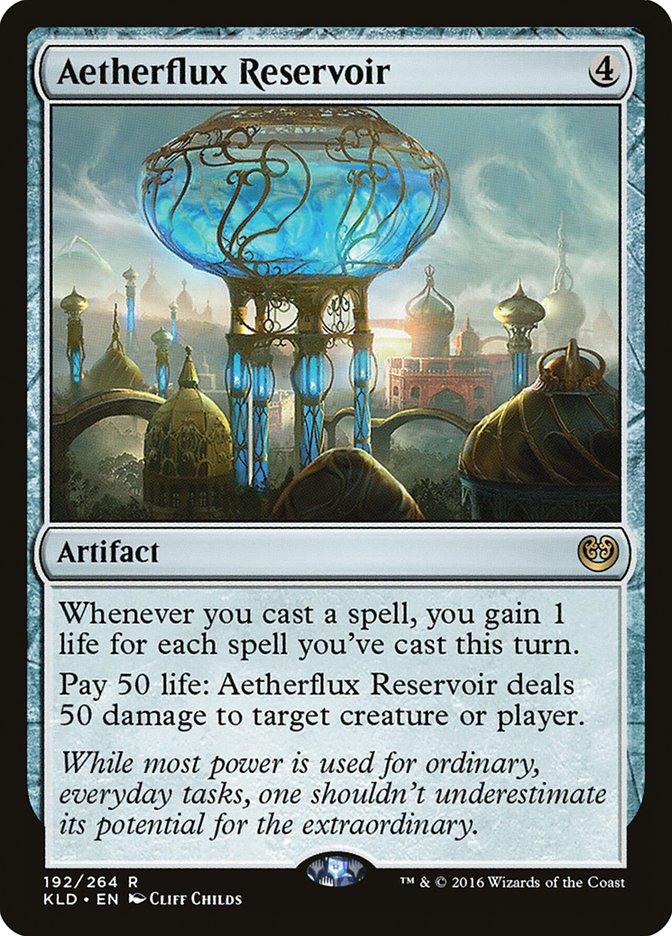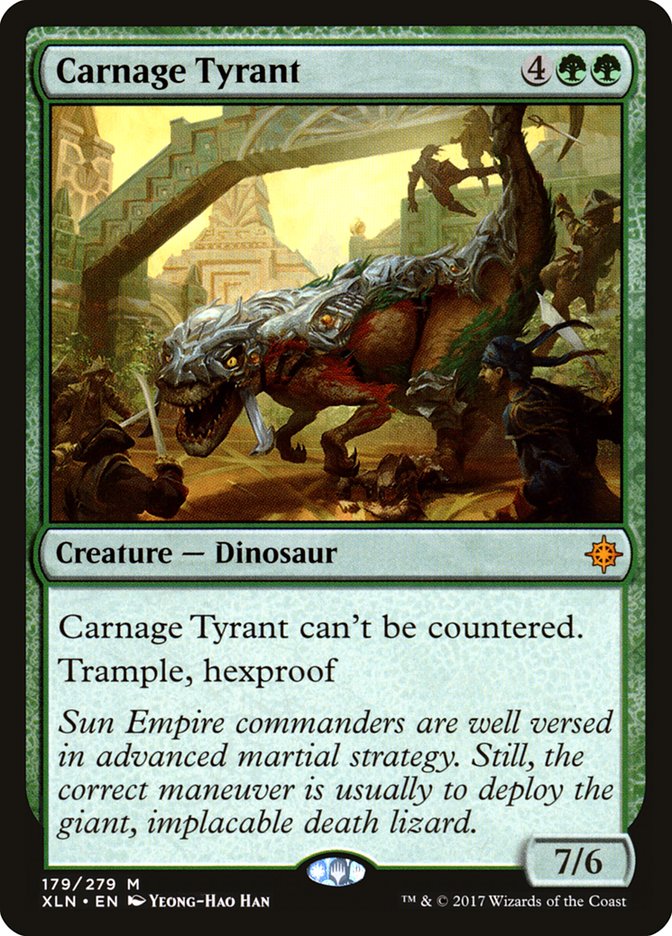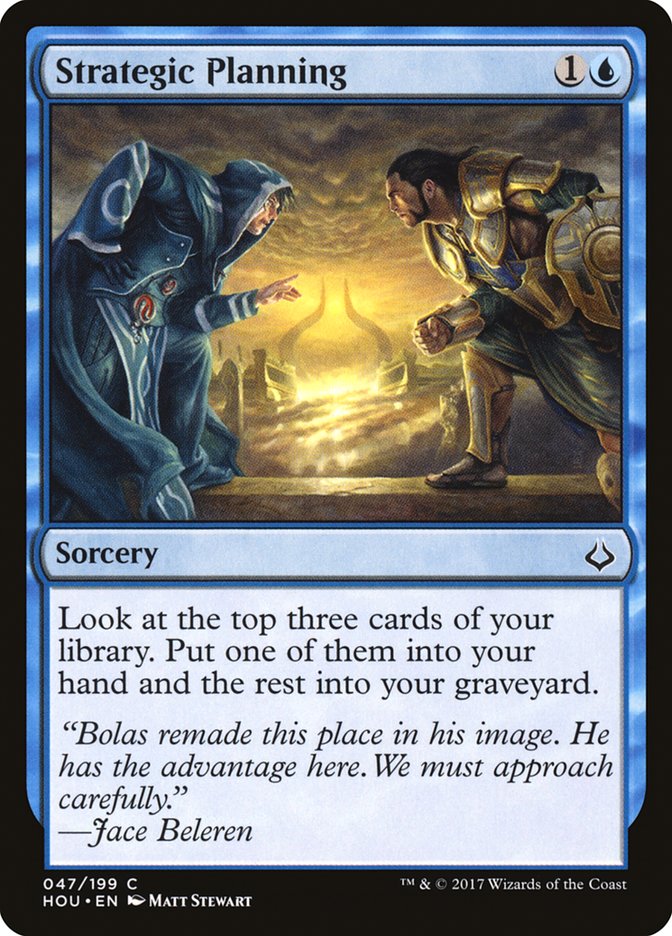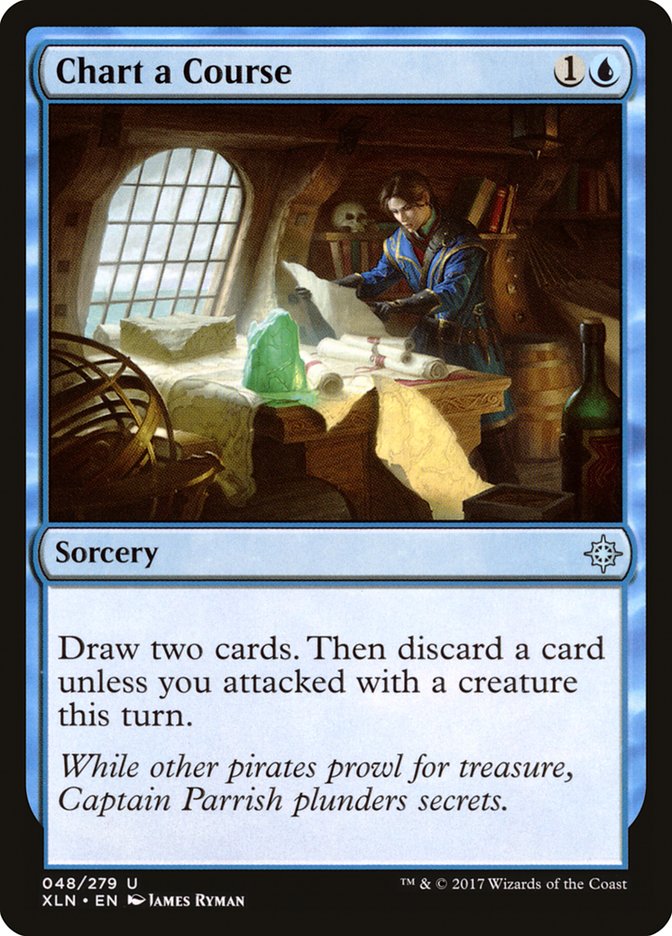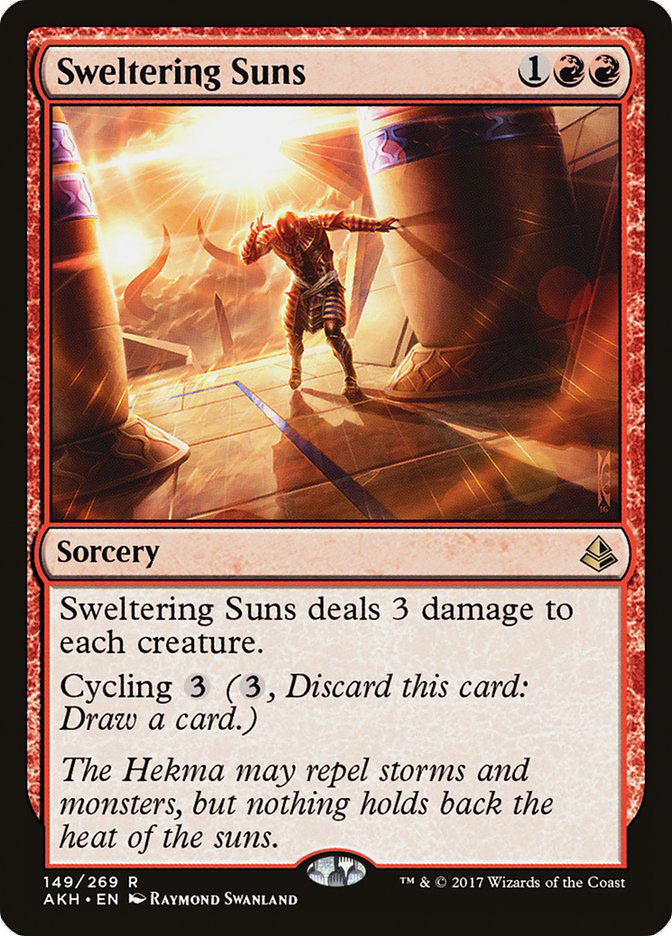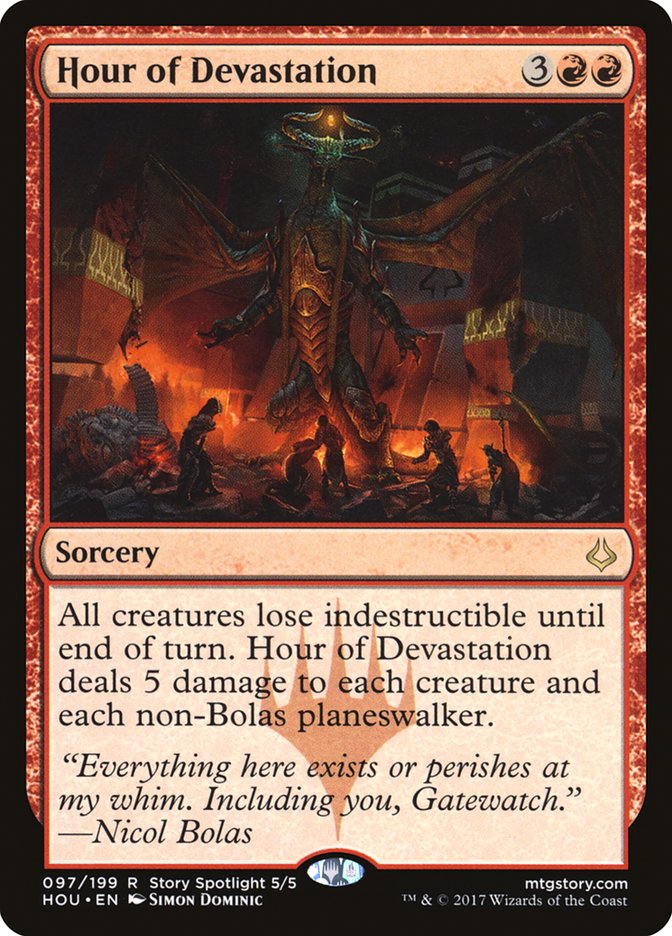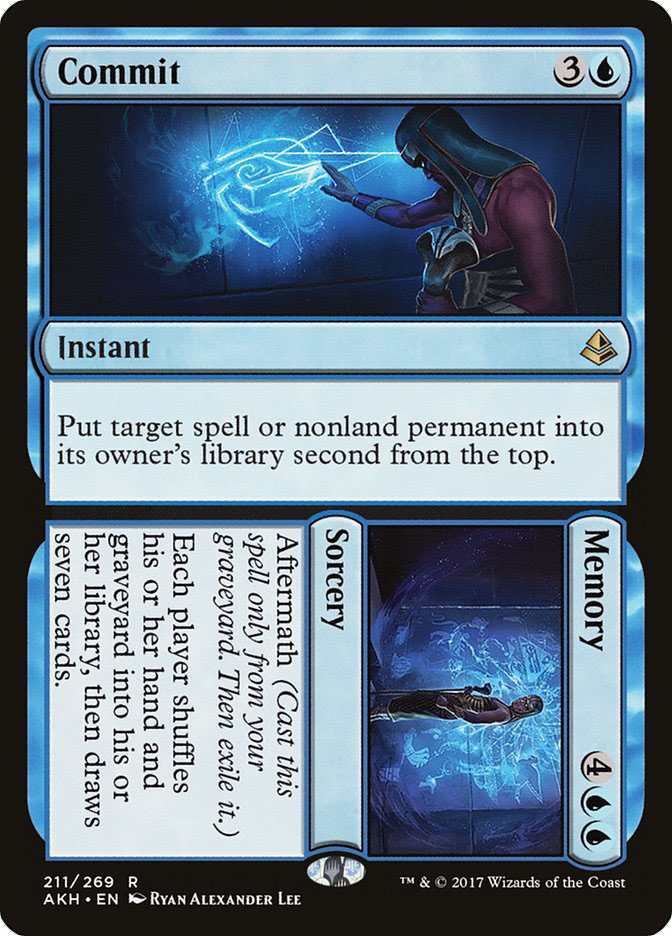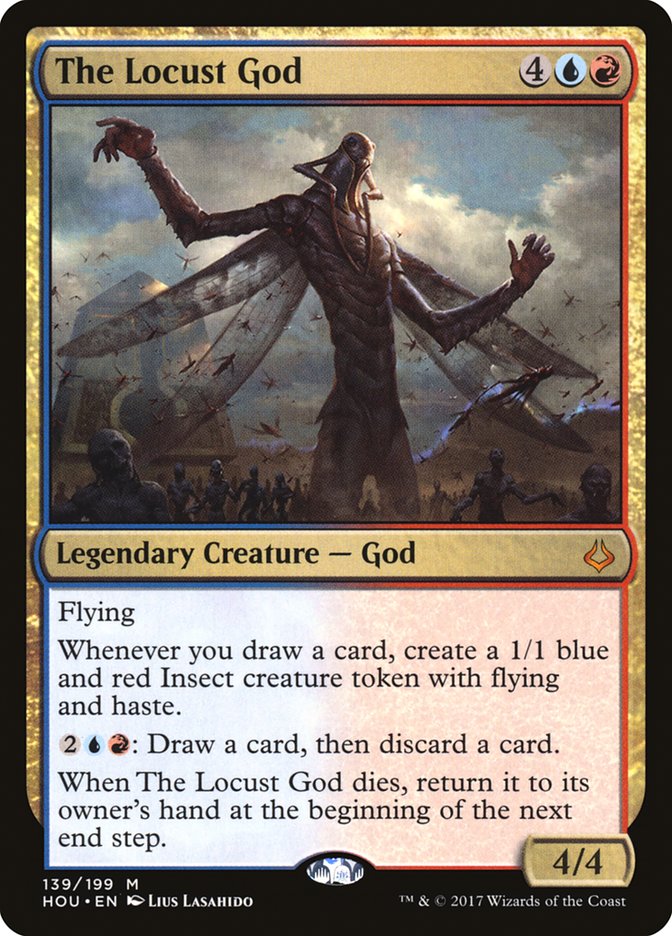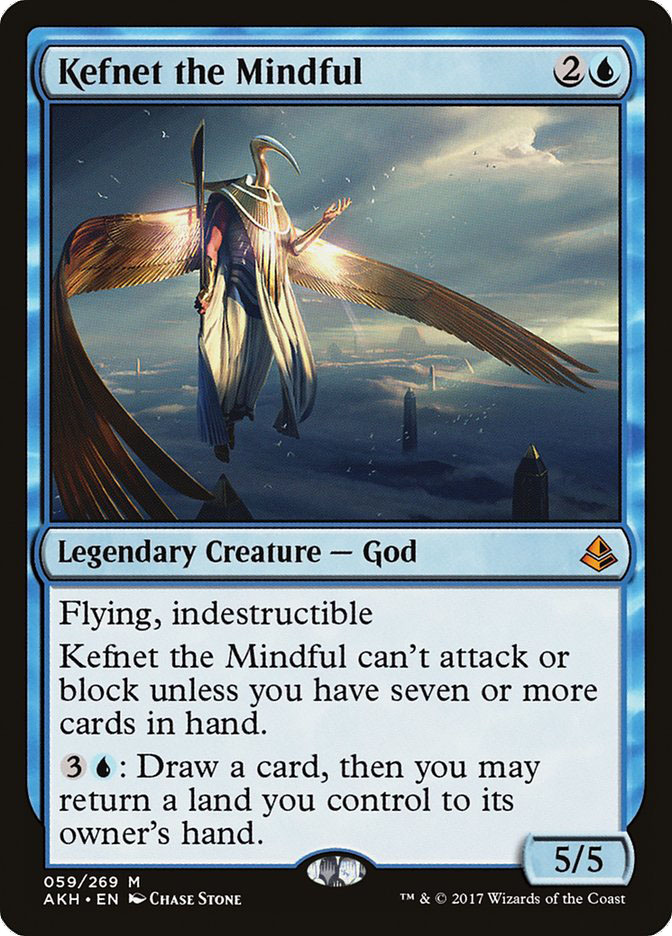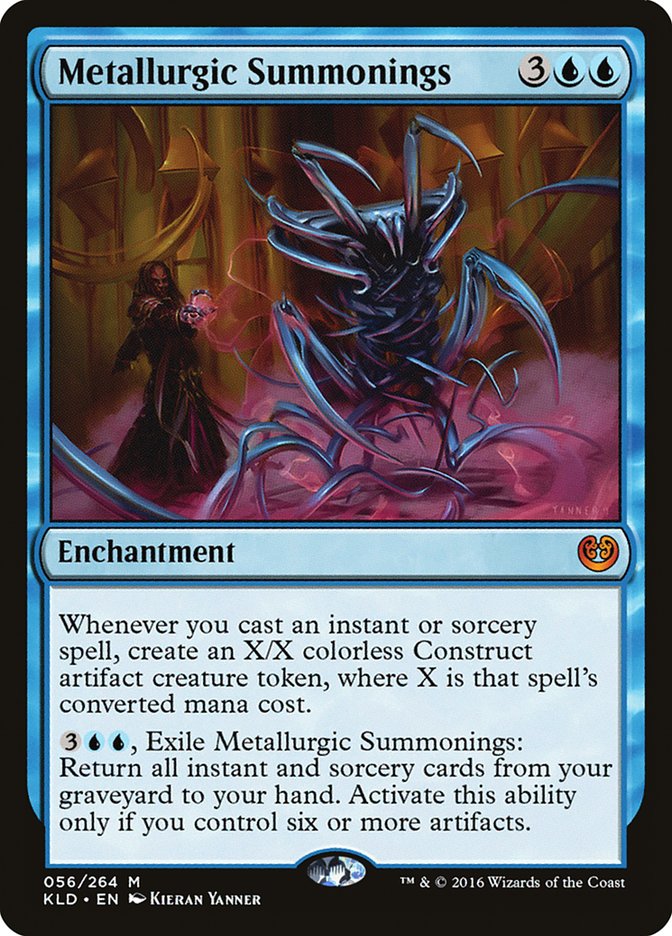Some cards just jump off the page at you when you read the text box, only to jump right back in when you look in the top right corner. That won’t often stop me from trying to make things work, perhaps long after I should really stop trying. Such is the spirit of the brewer.
Brewers often attract brewers. Two of my very good judge friends, Elliot Raff and Mani Cavalieri, have been working on a list for Standard that looks like a collection of awful cards that have seen no play. Once they shared the somewhat-tuned list with me and I started playing it, I was instantly in love. The changes since have been few and far between, as many cards have been considered, tried, and discarded. In the end we could not cut the namesake card of the deck:
No, you didn’t accidentally click on a Modern article that is trying to convince you to run Hazoret’s Undying Fury in Storm…though I do think that is worth a shot. This is definitely a Standard deck and definitely intends to cast more than one copy of this spell each game. Possibly even in the same turn. How are we doing that, you ask? Well, here’s our reject mythic rare in the deck:
Another card you probably looked at and tried to break, Paradox Engine definitely has a powerful text box. Now, I’ll say it up front: it won’t untap the lands we used to cast Hazoret’s Undying Fury and thereby negate the drawback. Most of the decks I tried with the Engine were built around mana creatures and making energy, and they just couldn’t get there.
We’re not going that direction today, which leaves us looking to artifacts. With the rotation of Battle for Zendikar we lost one of our best mana rocks in Hedron Archive, leaving us with some slim pickings on that front. Time for another reject rare:
Yes, it’s very slow. In this deck, though, you get more than the usual payoff, making that lack of velocity easier to mitigate. We have enough card draw that we will often have an extra land available, which is really all you need to get a counter on the Pyramid. Once you hit that third counter, the entire deck shifts into overdrive. But to what end? What are we going to do with all that mana? Here’s the current iteration of one of the most fun decks I have played in Standard in some time:
Lands (22)
Spells (38)

Wait, What? How Does This Win?
The deck plays a lot like a Storm deck, as you can probably tell by the inclusion of Aetherflux Reservoir. The goal is to cast Paradox Engine and then use your mana rocks to cast a bunch of spells that cost less than you are tapping for and also draw you into more spells. Hazoret’s Undying Fury is the key that generally unlocks this, giving you usually three untap triggers from the spells you hit in addition to the one it provides itself. From there you really just need to find one of the win conditions.
The Win Conditions
When I first started testing this deck, the only win condition was Aetherflux Reservoir. That had to change because of Ixalan’s Binding and similar cards, but mostly because we wanted to fit additional removal into the deck. Cut is probably the single best addition that has been made to the deck since I started working on it. It will almost always kill an early Longtusk Cub, can take care of Gifted Aetherborn and Glorybringer, and is relatively easy to get into the graveyard when there is no creature to remove thanks to Chart a Course and Strategic Planning. Generating 22 mana is actually easier than casting enough spells to get to 51 life or more.
With that said, Aetherflux Reservoir keeps a spot in the deck for a couple of reasons. There are times when gaining three or six life in one turn is enough to buy you another draw step to turn on a Pyramid of the Pantheon or find another draw spell. Abrade is also a concern, though it is seeing less play now. My main reason for wanting to keep a copy though is the immense satisfaction of killing someone with the Magic equivalent of a Death Star blast to the face. Commence primary ignition!
To pretend that control decks are easy matchups would be a lie. Even with a bunch of dead cards in Game 1, they only have to counter one or two key spells to win. Our sideboard plan is to take advantage of them sideboarding out removal (or at least sweepers) and bring in the hardest-to-deal-with creature in Standard in Carnage Tyrant. Even if control has left in some removal because they couldn’t sideboard out enough or because they expect you to transform post-sideboard, the Tyrant is not going to care. After all, there’s no way they left in Fumigate…right?
Firebrand Archer is in a similar spot, though it is better against U/B Control that can bring in Duress in addition to extra Negates. They probably have to bring in creatures against us because of all the dead cards, but we leave in our Cuts anyway to finish the game. The Archer is not likely to deal all twenty, but it will make it much easier to get a lethal Ribbons off.
Walking Ballista was originally the win condition here. The issue Game 1 was the prevalence of Essence Scatter, and we cannot profitably cast it from a Hazoret’s Undying Fury. In some metagames it may still be the correct call, and it does have the advantage of sitting on the battlefield and attacking or picking off creatures before we actually win, but it is also easier to deal with that way. I can see an argument for playing it over Firebrand Archer in the sideboard, however. I know Mani is still running them in the sideboard.
Mana Rocks
We have debated quite a bit over the choice between Cultivator’s Caravan and Manalith. There are some corner cases where the Caravan has a downside (giving the opponent a target for Aether Meltdown Game 1, for example), but it also can trick our opponent into thinking we can crew it. Both of these are so marginal that I have opted for the split. If we do bring in some creatures for Game 2, I like having the ability to randomly attack for five sometimes.
Pyramid of the Pantheon is likely the most important card in the deck. At every opportunity, add a counter to it. This might mean you cast Opt on Turn 2 and Strategic Planning on Turn 3, but we were only going to cast one spell on each of those turns anyway. It is possible to get counters on there while going off, but that’s definitely a last-ditch situation that you want to avoid. Generally, when going off, you want to add blue mana with the Pyramid, only adding black when you are ready to win and red if you need to kill things.
As an aside, this deck would absolutely love a Mind Stone, Gilded Lotus, or even a Seer’s Lantern. We lost a lot of mana rocks with rotation, sadly, making the deck less explosive. We have Pyramid of the Pantheon, though, so we will make do.
Card Filtering
There are quite a few options here. Opt was the new card that made the whole thing viable, giving us the extra cheap card draw spell that can kick the mana production engine into overdrive or find your pieces early. I would not be caught dead with fewer than four copies.
Strategic Planning is a new addition that has replaced some number of Chart a Course and Glimmer of Genius. It digs deeper than Chart but can also be cast much earlier than Glimmer, which is important when we are trying to load up a Pyramid. It has the upside as well of putting a Cut in the graveyard if needed. It’s not an instant, but that might have been too good.
I am still on two copies of Chart a Course because of the aforementioned need to put Cut in the graveyard sometimes, but also because the early draw-two effect is something I value very highly. The cost is either a fourth Supreme Will or a third Glimmer of Genius. Supreme Will has the advantage of being modal and sometimes countering a serious threat on the other side while also digging us deeper than anything else in the deck for the one card we really need. Glimmer of course is a very powerful effect that has seen a tremendous amount of play, but the four-mana cost keeps it from playing a bigger role in the deck.
The Rest
Sweltering Suns and Hour of Devastation are not subtle cards. They are here to keep us alive long enough to do our thing, and they perform that task admirably. If your local metagame is heavy on aggressive or token decks, consider more Sweltering Suns. In a pinch we can of course cycle them.
If Pyramid of the Pantheon is the most important card in the deck, Paradox Engine is its muse. Generally you won’t win without it, thought you can occasionally win without a Pyramid. I don’t recommend trying. Remembering your untap triggers and floating as much mana as possible is the key to getting the mechanics of the deck right. You often won’t want to cast Paradox Engine until you are ready to go off, but if you can immediately cast another spell and untap some artifacts, you can sometimes run it out there. You must explicitly say you are retaining priority after you take an action. This won’t often come up, but it can when casting Hazoret’s Undying Fury.
Commit was the card I questioned when I first saw this list. Yes, of all the cards I could have scratched my head over, that was the first one. Not only is the front half sometimes valuable to counter a key spell or bounce something like Cast Out, the back half is a great way to ensure we can refill our hands and keep the engine running if we are about to sputter out mid-combo.
The sideboard should be pretty self-evident. River’s Rebuke is for the multitude of Tokens decks that are floating around right now; that card gives those decks fits. Baral’s Expertise is often going to do more work than Hour of Devastation against Temur Energy decks, also allowing us to cast something on the back end. Sadly, that something cannot be a Paradox Engine, which is why we only have the one copy.
Missing the Cut
Several cards have been mentioned to me while playing this deck, and most of them we have already tested. Possibly the most common suggestions are Primal Amulet and Search for Azcanta. While the latter is definitely too slow, the former might be closer. The problem is that it’s mostly only good when we have Paradox Engine and can add mutiple counters in a turn. It’s definitely great when transformed, but getting to that point is not a given.
The Locust God might seem like a great fit, especially for sideboarded games. We are going through a lot of cards and we could do with a resilient threat like this. There are a couple of problems, though. The fact that The Locust God cannot be cast off a Hazoret’s Undying Fury is a big drawback, unless we cut them for The Locust God straight-up. That being said, the current configuration of the deck doesn’t actually draw that many cards, instead putting cards into our hands.
Kefnet the Mindful is actually a sensible suggestion. Three mana is a reasonable point and we can definitely make use of the card draw on turns when we have nothing better to do with our mana. The concern here is that we are unlikely to be able to attack very often; the deck does not usually have more than three cards in hand. If we changed out the Spirebluff Canals for Aether Hubs (as I believe Mani is currently doing), Kefnet gets better, but I’m not convinced.
Metallurgic Summonings is a pet card of mine that might be worth a look as a sideboard win condition, but it also might be too slow to get going. Five mana is a lot to invest for no immediate impact, even if it does draw out a counterspell that helps our Paradox Engine possibly sneak through. If we ever activate the exile ability on Metallurgic Summonings, though, I don’t think we’re very likely to lose.
That’s all I have for you this time out, folks. This might not be my baby, but it definitely pulls at my heart. As always, thanks for stopping by, and until next time…Brew On!



